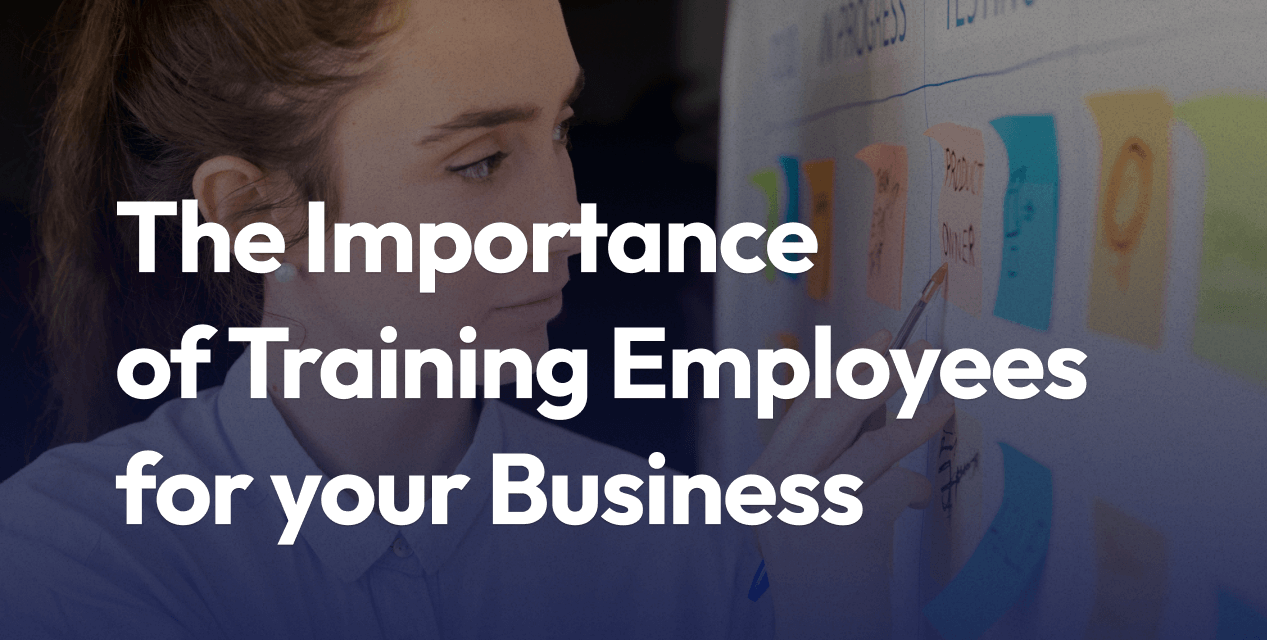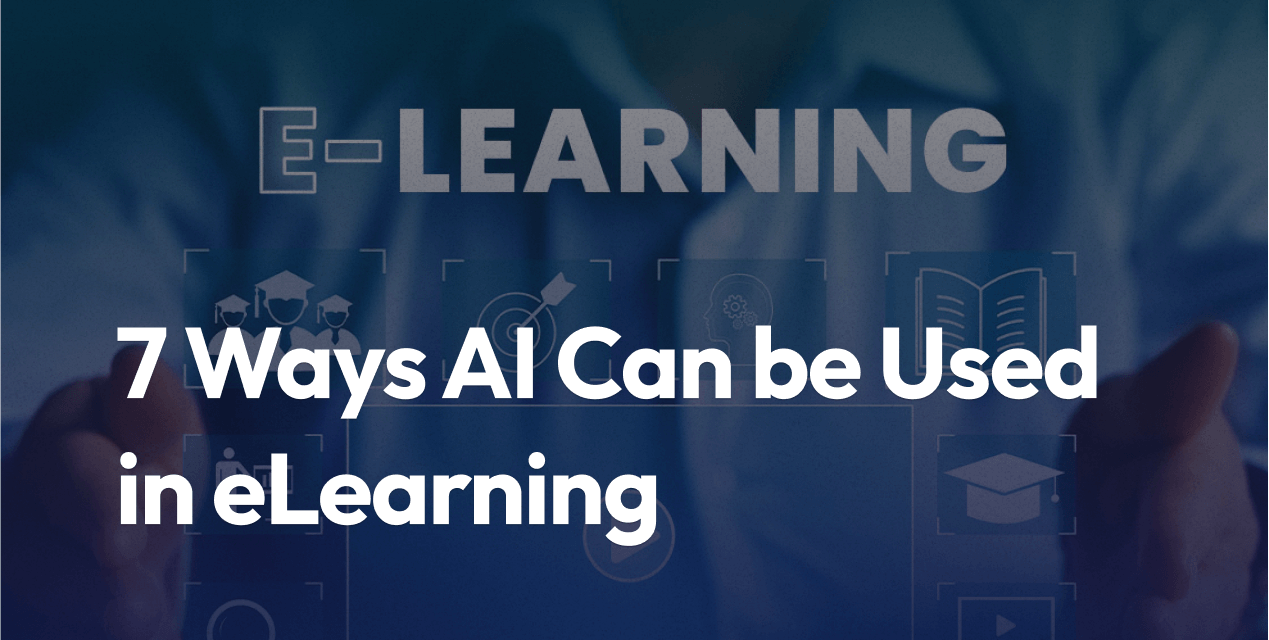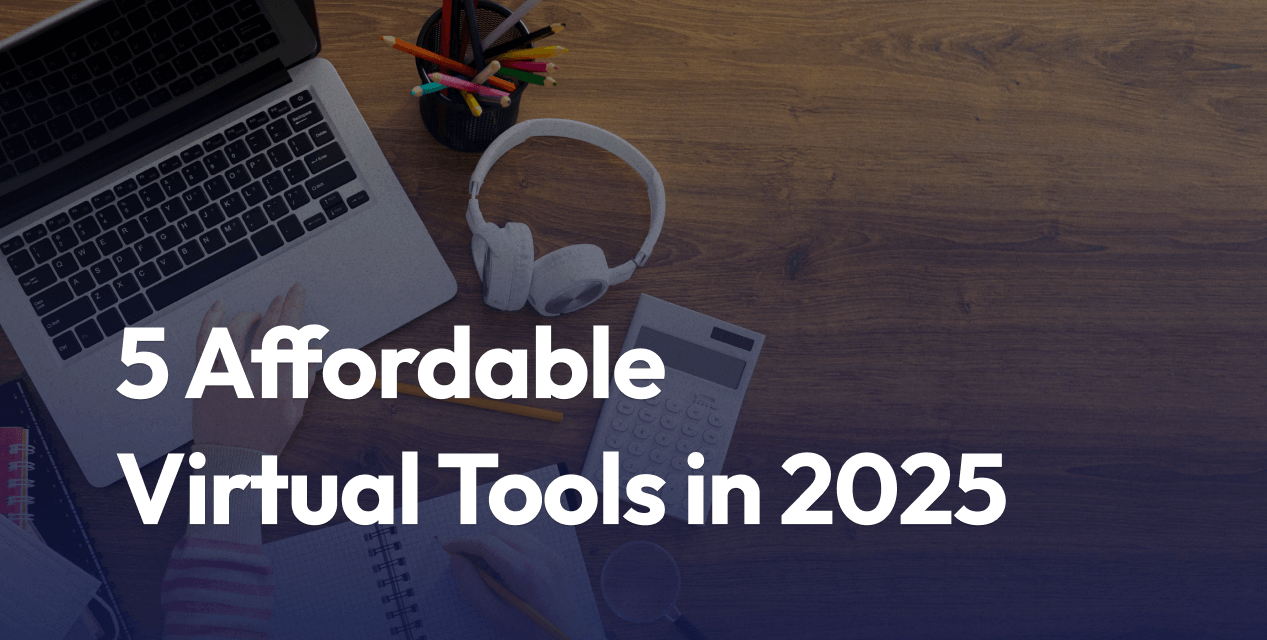
The Importance of Training Employees for your Business
Getting people up to speed isn’t just about onboarding — it’s about building a team that’s always learning. When employees get quality, ongoing training, they’re more confident on the job, more likely to stick around, and more productive. That means work gets done faster, fewer mistakes slow things down, and everyone’s morale increases.
Businesses that make training a habit have a real edge over the competition. With LMS Light, you can keep skills sharp, close knowledge gaps, and unlock real growth without the hassle and confusion of outdated systems. Investing in the right training tools pays off fast — teams become more adaptable, customers get better service, and you hold onto your best people. That’s what continuous workforce development should look like.
Align Training with Business Goals
Training isn’t just an item to check off the HR list. If you want your team to hit real targets — higher sales, smoother operations, happier customers — you’ve got to tie every learning experience back to what matters for the business. This means your employee development isn’t happening in a vacuum. Training is there to boost results, not just skills for the sake of it. LMS Light helps you turn your company’s priorities into actionable learning plans so that every training session drives your goals forward.

Why Alignment Matters
When training is aligned with company objectives, you don’t just end up with better-trained employees—you get a stronger business. Here’s why that’s so important:
- Clear focus: employees know exactly why they’re learning something and how it drives results.
- Better engagement: people are more interested when training links to real challenges or ambitions.
- ROI you can see: training budgets go further because every session supports a key priority.
Research backs this up. Companies that match development to real business needs see higher productivity, more innovation, and a boost in profitability (Gallup found an 11% bump where development was a priority).
Getting Everyone on the Same Page
It’s not about buying the latest course. You start by identifying what you need as a business:
- Define specific business goals. Are you looking to grow sales, cut costs, or improve customer retention? Get as specific as possible.
- Spot skill gaps. Use performance reviews, customer feedback, and even simple surveys. What are your employees missing?
- Design targeted programs in your LMS. Roll out training that fills these gaps and moves the needle, not just what’s trendy.
Tools like LMS Light make this easy. You can map learning paths directly to your business objectives, track progress, and adjust as goals shift.
Real-World Wins: How Alignment Pays Off
Think about Starbucks. Their focus on customer experience isn’t just a slogan — it’s in every training session, from handling difficult orders to delivering memorable service. Tech giants like Amazon and Apple center training on innovation and product expertise, keeping their teams ahead of the curve and locking in loyalty.
In your company, aligning training could mean:
- Teaching new hires the sales script that converts customers.
- Training support staff on the workflows that reduce response times.
- Building courses that help your team master new software, so you don’t lose momentum.
With LMS Light, aligning training is no longer a headache. The platform puts everything in one place: business goals, learning objectives, skills tracking, and progress dashboards. It’s easy to show leadership that your training spend is moving the entire business forward. And honestly, that’s what everyone wants—a learning program that delivers on its promise.
Tip 2: Invest in Employee Growth for Long-Term Retention
If you want people to stick around, you have to give them a reason. Training is just a starting point. The real impact comes when employees see a future for themselves inside the company and believe that leadership cares about their growth. Good people aren’t just looking for a paycheck; they want a place where they can do their best work and get better over time. When you put time and resources into employee development, you’re not only building up skills — you’re building trust. And in the SaaS world, where high performers can jump ship in a heartbeat, trust and growth matter more than ever.
Link Between Learning Opportunities and Job Satisfaction
People want to feel valued. One of the strongest signals you can send is by giving employees real chances to learn — and making it easy for them to keep growing. Recent studies show that when organizations offer ongoing development, employees are:
- Happier in their work.
- More loyal to the company.
- Less likely to look for jobs elsewhere.
It’s simple. Lack of learning leads to boredom, frustration, and people updating their resumes sooner than you’d hope. High-quality training, mentoring, and even informal learning (like job shadowing or project swaps) keep things fresh and meaningful. Employees feel recognized when they get approached for growth opportunities or are seen as “go-to” experts.
LMS Light is built for companies that care about this. The platform lets you mix formal courses, peer mentoring, and on-the-job training, so everyone can find a path that fits their style. You can track who’s participating and spot people who are ready for the next step. That level of transparency helps build real engagement, because everyone can see what’s on offer and what they’re working toward.
Quick facts on why learning matters:
- Employees with access to ongoing learning are up to 50% more satisfied with their jobs.
- Companies that provide growth opportunities cut their turnover by as much as one-third.
- Being recognized as an expert and having input in projects drives both satisfaction and motivation.
Creating Career Paths Through Skill Development
Growth isn’t just about climbing a ladder. Sometimes, it’s about jumping into a new area or picking up skills that make the day-to-day work more interesting. You can show your team a future with your company by building out clear, flexible pathways for professional growth, not just one-track promotions.
Here’s how to structure career development that gets people excited to stay:
- Map out possible career moves. Lay out different pathways, whether it’s moving up, sideways, or even into special project roles.
- Personalize learning plans. Use your LMS to let employees set goals, track progress, and pick from a library of courses, job rotations, or mentoring options.
- Highlight achievements. Make wins visible — not just for managers, but for peers too. Recognition goes a long way in keeping people motivated.
- Keep communication open. Regular check-ins help employees see how they’re progressing and what needs improvement.
With LMS Light, you can set up self-paced learning journeys, formal training modules, and mix in real-world projects that support day-to-day business needs. The platform’s analytics make it easy to spot gaps and strengths, so employees don’t feel lost or overlooked.
Why this approach works:
- People see they don’t have to “wait in line” for the next promotion—they have real options.
- Managers can spot hidden talent and build up the next wave of leaders.
- The company gets a workforce that’s ready to handle new challenges as the business grows.
When you invest in employee growth, you’re not just filling seats. You’re making your company the kind of place people want to join—and don’t want to leave. Everyone wins: the employee, the team, and your bottom line.
Tip 3: Use Diverse and Modern Training Methods
A training program will never be one-size-fits-all, especially as teams grow and stretch across departments, or even time zones. Your people learn in different ways, at different speeds, on different devices. Modern training methods let you meet them where they are. You can boost results — and keep day-to-day work running smoothly — simply by mixing up how you teach. It’s all about flexible, practical options that your team will use and remember.
Leveraging Digital Tools and LMS Solutions
LMS Light is central to how companies train their teams today — and for good reason. The best LMS platforms bring together several modern methods, making it simple to create, assign, track, and customize learning.
Here’s how LMS Light and similar tools are changing the game:
- Microlearning. Training doesn’t need to be hours long. Short lessons (think 5-10 minutes) deliver what’s needed without dragging things out. Teams can slip them in between tasks or on their commute.
- Mobile access. Employees can learn where it works for them—at their desk, on the go, or even from home. This flexibility means training doesn’t disrupt productivity.
- AI personalization. Platforms like LMS Light can recommend content based on each employee’s role, recent progress, or even gaps in knowledge. The learning path isn’t static; it adapts as your business needs change.
- Gamification. Earning badges, hitting learning streaks, or completing challenges makes training more engaging. People stay motivated and are more likely to finish what they start.
- Real-time analytics. Managers know who’s on track and who needs help thanks to easy-to-read dashboards. With LMS Light, you can see what’s working — and tweak what isn’t — right away.
The right tech makes it possible to combine different formats: videos, quizzes, articles, and live webinars. It also makes sure training is always accessible, repeatable, and trackable. That’s key for SaaS businesses where things (and people) move fast.
Fostering a Continuous Learning Culture
It’s not enough to roll out a course once a year and call it done. Teams stay sharp when learning is built into the daily routine. Continuous learning makes growth feel like a natural part of work life, not a chore.
Here’s how to make ongoing development a habit in your company:
- Make learning the norm: Talk about new skills and training in meetings, emails, and chats—just like you’d talk about key projects or wins.
- Build skill refreshers into workflows: Use short modules inside your LMS for quick skill checks or compliance reminders. People can review what’s new without it feeling disruptive.
- Recognize growth: Celebrate when someone completes a tough module or earns a certification. Shout-outs in Slack or team meetings go a long way.
- Encourage role-based learning: Let employees pick courses that fit their goals, not just what’s assigned by their manager. Curated learning paths in LMS Light let people focus on what matters for their next step.
- Stay flexible: Offer options for how and when to learn — self-paced courses, live workshops, or peer groups. This puts employees in control and keeps things personal.
With LMS Light, employees can access what they need, when they need it, and managers don’t have to chase anyone down. Training becomes just another part of how the team works together and stays ahead. Companies that foster learning every day see fewer knowledge gaps, higher morale, and a workforce ready for anything new.
Tip 4: Link Employee Training to Customer Satisfaction
When employees get the right training, it’s not just about hitting internal targets or staying compliant — it’s about giving every customer a better experience. Imagine your top team member handling a tricky customer issue with zero stress, or a support agent explaining complex features in plain English. These moments don’t happen by accident. They’re the direct result of focused training that connects what your people learn to what your customers feel when they interact with your business.

Why Customer Satisfaction Starts with Staff Training
Every customer touchpoint flows through your team. If they’re confident and know their stuff, your customers get fast answers, friendly help, and that feeling of being valued. But the opposite is also true—gaps in training show up right away as long waits, mixed messages, or even mistakes.
A strong link between employee training and customer satisfaction isn’t just a theory:
- Studies confirm it: Companies with robust training programs routinely earn higher Net Promoter Scores (NPS) and Customer Satisfaction (CSAT) ratings.
- Better-trained teams resolve issues faster and leave customers more likely to return or recommend your company.
- Satisfied employees deliver better experiences. Training boosts engagement, so your team shows up with energy and pride.
When you train for customer-first skills — like product knowledge, de-escalation, and clear communication — your people make even tough situations easy for customers.
Practical Examples: Training’s Direct Impact on Customer Experience
Let’s get specific with some scenarios. Here’s what great training makes possible:
- Support teams use role-plays and simulations in LMS Light to prep for real issues, so no one fumbles an urgent ticket.
- Sales enablement modules teach reps to demo new software features in language customers understand, not just tech jargon.
- Certification tracks reward agents for mastering quick handling of refunds, shipping glitches, or billing concerns. This recognition motivates real improvement.
Industry leaders like Amazon and Apple use their LMS to gather real-time customer feedback, then adapt future sessions to fix pain points. With LMS Light, SaaS companies can do the same by mapping training to key metrics and feedback trends.
How LMS Light Makes the Connection Real
A modern system like LMS Light takes the guesswork out of building this connection:
- Personalized learning. Employees see the “why” behind every lesson, like how a new product walkthrough ties into the common questions customers ask.
- Customer feedback integration. Training content gets updated whenever new pain points surface from support tickets or survey results.
- Progress dashboards. Managers and staff both track how employee learning lines up with customer satisfaction improvements.
You don’t have to rely on gut feelings. Every change, every update, and every rollout is measured against real outcomes like CSAT and NPS, all visible within the LMS platform.
Key Training Topics That Drive Customer Loyalty
To see the full payoff, your training should cover the areas that mean the most for customers. Focus on:
- Product knowledge. Confidence to answer questions right away.
- Soft skills. Listening, empathy, and clear communication.
- Problem-solving. How to handle tricky requests or complaints, fast.
- Consistency across channels. Same great experience whether customers are on chat, phone, or email.
All of these are easy to roll out — and keep updated — with LMS Light. Use microlearning, badges, gamification, and ongoing coaching so every skill stays fresh.
The Bottom Line
When you train your staff with customer outcomes in mind, you build loyalty, reduce churn, and get more positive reviews. Investing in this approach through tools like LMS Light means your team isn’t just “trained”—they’re empowered to make every customer interaction count.
Tip 5: Measure Training ROI and Optimize Investment
Making time and spending money on training can feel risky if you can’t prove it’s helping your business. Here’s the good news: you no longer have to guess. With smart tools like LMS Light, you get clear data that shows if your training is working, where it’s falling short, and how it’s moving the needle for your team and bottom line. Measuring return on investment (ROI) shouldn’t be a mysterious math problem. It’s about focusing on key metrics, watching what happens after training, and making changes based on real feedback, not gut instinct.
Key Metrics for Tracking Training Success
You can’t manage what you don’t measure. That’s doubly true with employee training. Seeing numbers go up — or down — tells you what’s paying off, who’s thriving, and where to course-correct before problems snowball.
Whether you’re running new hire bootcamps, customer support refreshers, or leadership programs in your LMS, start with these key metrics:
- Participation and completion rates.
How many people sign up, show up, and finish each course or training module? Low numbers could point to scheduling issues or snooze-worthy content. - Engagement metrics.
Track time spent in training, interaction rates with course materials, and how often employees revisit important modules. High engagement signals that learners are interested and see real value. - Assessment scores and pass rates.
How well do employees retain and apply what they’ve learned? Use quizzes, simulations, and post-tests to track this. - Application on the job.
Are employees using new skills in their everyday work? This might look like fewer support mistakes, faster project delivery, or stronger sales calls. - Retention and turnover.
Track how long employees stay after completing training. Companies often see higher retention and less turnover as a direct result of meaningful development. - Business performance metrics.
Go deeper by tying training results to things like sales numbers, customer satisfaction scores, error reduction, or compliance rates. - ROI.
Sum up the business benefits (like productivity bumps or error drops) versus what you spent on training. With LMS Light, dashboards make these numbers easy to track and share.
Adapting Training Based on Data
Collecting data is only half the job. What matters is what you do with it. LMS Light lets you move fast: one look at your dashboard and you see what’s catching on or falling flat. Now, tweak, rework, and fine-tune to keep your training sharp.
Here’s how to keep your training programs in top shape:
- Spot the drop-off points.
If lots of users are bailing halfway, identify whether the content is confusing, irrelevant, or too long. LMS Light’s analytics will pinpoint where learners lose interest. - Personalize paths.
Use feedback and skill gap analysis to suggest courses that fit each employee. Maybe someone needs extra practice on compliance, while another is ready for a sales masterclass. - Run A/B tests.
Try two different formats or modules—video vs. interactive quiz, for example — then see which one keeps people engaged and helps them retain the knowledge better. - Get real-time feedback.
Ask for employee opinions post-training. Their input helps you update training immediately, not months later. - Measure skill application.
Check if employees are using new skills on the job. Look for faster onboarding, quicker support responses, or more closed sales as proof that your training clicks in real settings. - Act on performance data.
If you see that training is boosting key metrics—like customer satisfaction or error rates—double down on what’s working. If not, change the approach, bring in new material, or try another delivery style.
What stands out with LMS Light is how quick and easy this process becomes. You don’t need a data scientist or a year’s worth of reporting — just a simple dashboard gives you the health check. By constantly refining your approach based on the numbers, you make training a smart investment, not a gamble.
The payoff? Training programs that deliver results, keep your team happy, and make every training dollar count.
Conclusion
Training isn’t just a nice-to-have — it’s a must if you want a team that performs, grows, and delivers for your business. When you invest in focused employee development, you don’t just tick the compliance box; you set the stage for higher retention, stronger productivity, and better service, which flows straight to your bottom line.
Using a platform like LMS Light takes a lot of guesswork and hassle out of the process. You get clear dashboards, practical learning paths, and tools that fit the way people work today. Training becomes part of your workflow, not something bolted on.
Set your team up with the knowledge and skills to work smarter and stay loyal. If you want to see real change—more motivated employees, happier customers, and a company that can adapt to anything — make modern training part of your core strategy. Thanks for reading. If you’re ready to see how LMS Light can help your team stay sharp and engaged, check out a free demo or share your training wins and struggles in the comments below.
Frequently Asked Questions
Q: Why is employee training critical beyond onboarding?
Because performance, retention, and morale are built over time, not just on day one. Ongoing training makes people confident, faster, and more accurate—so output goes up, errors go down, and teams stick around.
Q: Which modern training methods work best in 2025?
Blend formats so learning fits work, not the other way around:
– Microlearning (5–10 min) for quick wins
– Mobile-first access for anytime learning
– AI personalization to skip what’s mastered and target gaps
– Gamification to sustain momentum
– Live + async mix for connection without calendar pain
Q: What LMS features matter most for employee impact?
– Rapid authoring + microlearning
– Adaptive paths (AI suggestions, prerequisites)
– Mobile & accessibility (captions, keyboard nav, contrast)
– Gamification & certificates (with expiries/reminders)
– Analytics with drill-downs and clean exports
– Integrations (SSO/HRIS, chat, calendars, video)
Q: Where does LMS Light specifically help?
– Turn goals into learning paths fast
– Microlearning + quizzes + auto-certs in minutes
– AI suggestions for next best module
– Dashboards that tie learning to KPIs
– Team portals for departments or roles
– Built-in accessibility and mobile-ready delivery

